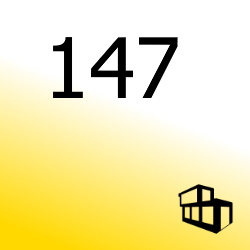Creating connections: the library's role in facilitating scientific collaboration
Abstract
Collaboration is a key factor in the development of science and scientific achievements. Having said that, libraries meet the challenge as intermediaries by providing services that aim to facilitate collaboration between scholars, which ultimately leads to increased research performance. The aim here is to discuss possibilities and examples of library services that facilitate collaboration as a means of fulfilling institutional objectives, in this case, to increase research performance in the Scientific Information Centre and Academic Library of Stellenbosch in South Africa (SULIS). The article identifies services and solutions implemented in SULIS, which strengthen the growing trend of scientific collaboration. The authors focus on three service aspects: (1) space and facilities that enable collaboration, (2) to create awareness of collaboration opportunities, and (3) bibliometrics as an example of service that supports and facilitates scientific collaboration and networking. In conclusion, the authors confirm the relationship between research collaboration and performance, and also demonstrate the importance of the library in helping researchers to identify suitable collaborators and creating an environment that facilitates access to the network and enables involvement and collaboration. The article shows through real-life examples how libraries are able to respond to new trends in learning, fulfill institutional objectives and establish new roles for librarians in the academic community. The meaning of "Creating connections" goes beyond simply initiating cooperation between scientists. It is the ability to recognise and identify changes in the dynamic scientific community by designing activities according to the University's institutional objectives and creating services that link them together.
References
BOYD, D.M., ELLISON, N.B. Social Network Sites: Definition, History, and Scholarship. Journal of Computer-Mediated Communication 2007, nr 13, z.1, s. 210–230.
BULLINGER, A.C., HALLERSTEDE, S.H., i in. Towards research collaboration — a taxonomy of social research network sites. W: Proceedings of the Sixteenth Americas Conference on Information Systems, Lima, Peru 2010.
CARL: Canadian Association of Research Libraries. Core competencies for 21st Century CARL librarians. Ottowa: CARL-ABRC, 2010.
GIBBONS, M., LIMOGES, C., NOWOTNY, H., SCHWARTZMAN, S., SCOTT, P., TROW, M. The New Production of Knowledge: The Dynamics of Science and Research in Contemporary Societies. London: Sage Publications, 1994.
GIGLIA, E. Academic social networks: It’s time to change the way we do research. European Journal of Physical and Rehabilitation Medicine (Europa Medicophysica) 2011, nr 47, z. 2, s. 345–349.
JACOBS, D. An Informetric analysis of publication and research collaboration patterns in natural and applied sciences in South Africa. South African Journal of Library and Information Science 2008, nr 74, z. 1.
KATZ, J.S., MARTIN, B.R. What is research collaboration? Research Policy 1995, nr 26, s. 1–18.
KROLL, S., FORSMAN, R. A Slice of research life: information support for research in the United States. Dublin, Ohio: OCLC Research, 2010.
MONTIEL-OVERALL, P. Toward a theory of collaboration for teachers and librarians. School Library Media Research 2005, nr 8.
MOUTON, J. Patterns of collaboration in academic science in South Africa. South African Journal of Science 2000, nr 96.
NEAL, J. Advancing From Kumbaya to Radical Collaboration: Redefining the Future Research Library. Journal of Library Administration 2011, nr 51, z.1.
OLSON, G.M., ZIMMERMAN, A., BOS, N. Scientific Collaboration on the Internet.Cambridge: MIT Press, 2008 (pozycja wprowadzona przez tłumacza na podstawie danych w tekście).
ONYANCHA, O.B. Research collaborations between South Africa and other countries, 1986-2005: An informetric analysis. African Journal of Library, Archives & Information Science 2011, nr 21, z. 2, s. 99–112.
PARRA, G., KLERKX, J., DUVAL, E. More!: Mobile Interaction with Linked Data. Proceedings of the International Workshop on Data-Centric Interactions on the Web 2010, nr 6, s. 37.
SCHLEYER, T., BUTLER, B.S., SONG, M., SPALLEK, H. Conceptualizing and advancing research networking systems. ACM Transactions on Computer-Human Interaction 2012, nr 19, z. 1.
SHEPHARD, M. Library collaboration: what makes it work? W: Proceedings of the 25th IATUL Conference, 30 May — 3 June 2004.
SULIS: Stellenbosch University Library and Information Service. Research Commons concept document. Unpublished, 2011.
SULIS: Stellenbosch University Library and Information Service. Strategic Directions 2010-2015. Unpublished, 2010.
SU: Stellenbosch University. Strategic Plan for the Environment of the VR (R). Unpublished, 2012.
SUBRAMANYAM, K. Bibliometric studies of research collaboration. Journal of Information Science: Principles & Practices 1983, nr 6, z. 1, s. 33–38.
VAN NOTE CHISM, N. Challenging traditional assumptions and rethinking learning spaces. W: OBLINGER, D.G. (red.). Learning spaces [on-line]. 2006. Dostępny w: http://www.educause.edu/research-and-publications/books/learning-spaces.
VAN RAAN, A.F.J. The influence of international collaboration on the impact of research results: some simple mathematical considerations concerning the role of self-citations. Scientometrics 1998, nr 42, z. 3, s. 423–428.

